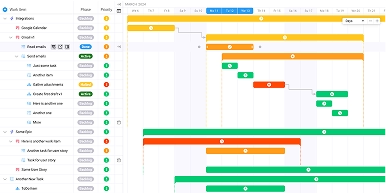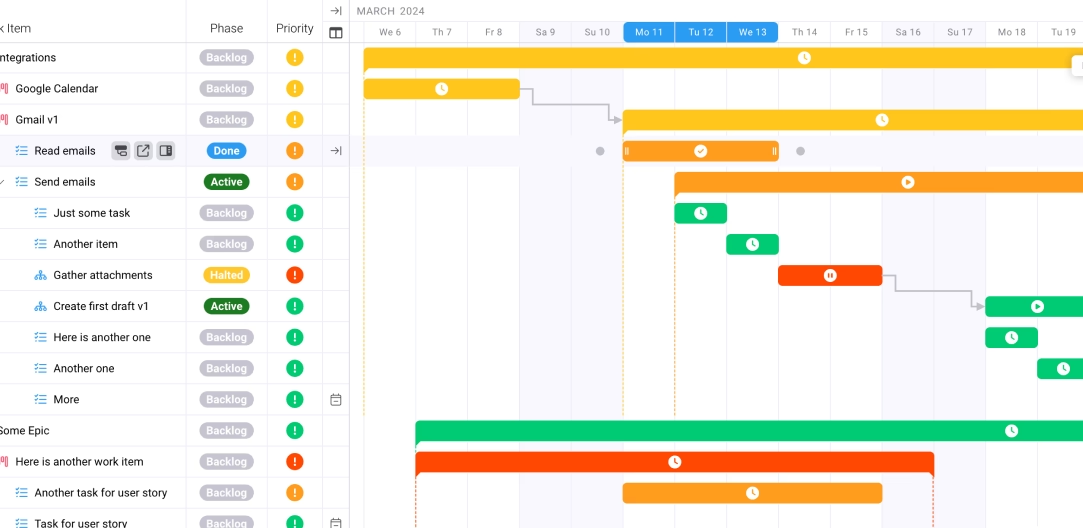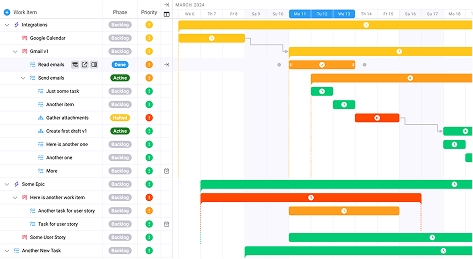
Struggling to Scale? How to Grow Your Marketing Agency Without Sacrificing Quality
Key takeaways:
Are you watching competitors expand their client rosters while your agency remains stuck at the same revenue plateau? Here's a sobering reality: 73% of marketing agencies are predicting revenue growth in 2024, down 8 percentage points from 2023. Yet the agencies that successfully grow your marketing agency are the ones implementing systematic approaches to expansion that protect their service quality from day one.
The cruel irony of agency growth is that success often breeds the very problems that destroy it. You land bigger clients, expand your team, take on more projects—then suddenly find yourself drowning in operational chaos, declining work quality, and frustrated clients threatening to leave. It's time to grow your marketing agency differently.
The Current Challenge - Why Most Agencies Fail at Sustainable Scaling
The harsh truth about agency scaling becomes clear when you examine the numbers. Nearly 70% of agencies cited new business sales as their main challenge, with only 13% describing their current pipeline as healthy. But the real problem isn't just acquiring new business—it's maintaining quality while serving more clients.
Most agencies approach scaling with a dangerous mindset: more clients equals more revenue equals more success. This linear thinking ignores the exponential complexity that comes with growth. Nearly half (44%) of marketing agencies are juggling four or more platforms to implement their strategy, creating operational nightmares that compromise service delivery.
The fundamental issue is that agencies focus on inputs (more clients, more projects, more team members) rather than outputs (better systems, improved efficiency, enhanced client outcomes). Client acquisition is tough when there is so much competition, and maintaining cash flow is one of the biggest challenges agencies face. Yet even agencies that master acquisition often struggle with the operational complexity that follows.
Consider the typical scaling trajectory: You start with five clients and deliver exceptional, personalized service. Quality is high, relationships are strong, and clients stay for years. Then you double your client base to ten, then twenty, then forty. Suddenly, you're spending more time managing internal chaos than delivering client value. Quality begins to slip, clients become dissatisfied, and retention plummets.
The root cause? Most agencies scale their revenue without scaling their systems. They add clients and team members without adding the operational infrastructure needed to maintain excellence. This approach inevitably leads to what industry experts call "scaling breakdown"—the point where additional growth actually damages the business.
The Strategic Framework - A Systems-First Approach to Quality Scaling
Successful agency scaling requires a fundamental mindset shift: from revenue-first to systems-first thinking. The agencies that grow your marketing agency sustainably focus on building operational excellence before pursuing aggressive expansion.
The Quality-Scale Balance Equation
Every scaling decision should pass through a simple filter: Will this change improve our ability to deliver exceptional results while serving more clients? If the answer is no, you're not ready for that next step.
The most successful agencies implement what we call the "Quality-Scale Balance Equation": Quality × Efficiency = Scalable Capacity. You can't maximize one variable while ignoring the other. 69% of agency leaders agree on the importance of project management and task management for sustainable business growth.
The Four Pillars of Scalable Quality
Pillar 1: Systematic Process DesignEvery client interaction, project phase, and deliverable should follow documented, repeatable processes. This isn't about creating bureaucracy—it's about ensuring consistent excellence regardless of which team member handles the work.
Pillar 2: Technology-Enabled EfficiencyThe right tools don't just save time; they prevent quality degradation. 12 workflow optimization strategies can save agencies 20 hours weekly when implemented correctly.
Pillar 3: Team Excellence StandardsScaling requires shifting from individual heroics to team systems. Every role should have clear performance standards, accountability measures, and quality checkpoints.
Pillar 4: Client Success MetricsYou can't manage what you don't measure. Establish clear metrics for client satisfaction, project quality, and business outcomes that guide every scaling decision.
Implementation Tactics - Five Proven Strategies for Quality-Focused Growth
Strategy 1: Implement Tiered Service Architecture
Rather than offering the same service level to every client, successful agencies create tiered service offerings that scale efficiently. This approach allows you to serve more clients while maintaining premium quality for your highest-value accounts.
Design three distinct service tiers: Premium (full-service, high-touch), Professional (core services with structured communication), and Essentials (focused deliverables with self-service elements). This structure enables you to grow your marketing agency by matching service intensity to client value.
The key insight: Hawke Media scaled to $150M agency by focusing on proprietary technology and systems that could deliver consistent results across different service levels.
Strategy 2: Build Quality Assurance Into Every Process
Quality can't be an afterthought—it must be embedded into your operational DNA. Essential project management best practices every marketing agency director must implement include mandatory quality checkpoints at every project phase.
Establish three quality gates for every deliverable: initial concept review, mid-project checkpoint, and final approval. Each gate should have specific criteria and designated reviewers. This systematic approach prevents quality degradation as you scale.
Create a quality scorecard that measures both technical execution and client satisfaction for every project. Track these metrics monthly and address any declining trends immediately.
Strategy 3: Master Client Retention Before Chasing Acquisition
The math is brutal: acquiring new clients costs 5-7 times more than retaining existing ones. Digital marketing agencies are capable of hitting retention rates closer to 84% or higher with retainer agreements, but only when they prioritize retention systematically.
Retainer-oriented agencies should be concerned if client turnover was higher than 20% because high churn indicates systematic quality or communication problems that will only worsen with scale.
Focus on retention optimization before aggressive acquisition. Perfect your service delivery, communication processes, and client success metrics with your current roster. Once you achieve 85%+ retention rates, you're ready to scale confidently.
Strategy 4: Standardize Communication and Reporting
Communication chaos is the silent killer of agency scaling. As your client base grows, inconsistent communication creates confusion, erodes trust, and destroys relationships.
Develop standardized communication templates for every client touchpoint: onboarding sequences, project updates, monthly reports, and performance reviews. COOs can optimize project management systems to enable sustainable marketing agency growth by creating these communication frameworks.
Implement a client portal system that provides 24/7 access to project status, reports, and communication history. This reduces reactive communication demands while improving client satisfaction.
Strategy 5: Create Scalable Team Structures
Traditional agency hierarchies break down under scaling pressure. Successful agencies implement pod-based structures where small, cross-functional teams handle complete client relationships.
Each pod should include all skills necessary to serve clients independently: strategy, execution, and account management. This structure prevents bottlenecks and maintains quality as you add more pods.
Proven agency growth strategies that enable 10x revenue scaling focus on replicating successful team structures rather than just adding individual contributors.
Measuring Success - KPIs That Matter for Quality Scaling
Scaling success requires monitoring both growth metrics and quality indicators. Many agencies focus exclusively on revenue growth while ignoring the quality degradation that threatens long-term sustainability.
Financial Health Indicators
Track monthly recurring revenue (MRR) growth, but balance it with client lifetime value (CLV) trends. Healthy scaling increases both metrics simultaneously. Monitor gross margin per client to ensure profitability scales with growth.
Global spend on digital advertising increased to $667.58 billion in 2024 and is expected to reach $870.85 billion by 2027, creating massive opportunities for agencies that scale effectively.
Operational Excellence Metrics
Measure project delivery times, budget variance, and scope creep frequency. These operational metrics predict quality issues before they become client problems.
Track team utilization rates and workload distribution to prevent burnout and quality degradation. Ad spending on social media is projected to reach $384.9 billion by 2027, but agencies must have operational capacity to capture this opportunity.
Client Success Indicators
Monitor client satisfaction scores, retention rates, and referral generation. These metrics indicate whether your scaling efforts are sustainable.
Track average client tenure and revenue per client over time. Healthy scaling should increase both metrics through improved service delivery and expanded relationships.
Team Performance Standards
Measure employee satisfaction, retention rates, and skill development progress. Quality scaling requires a stable, growing team that maintains high standards.
Monitor training completion rates and certification achievements to ensure team capabilities grow with client demands.
Future Considerations - Preparing for Sustainable Long-term Growth
The agencies that successfully grow your marketing agency for the long term are already preparing for the next evolution of the industry. Technology, client expectations, and competitive dynamics continue changing rapidly.
Technology Integration and Automation
Artificial intelligence and automation will fundamentally reshape agency operations. The question isn't whether to adopt these technologies, but how to integrate them while maintaining the human touch that clients value.
Focus on automating routine tasks while preserving strategic thinking and creative problem-solving for human team members. This approach scales operational capacity without sacrificing the relationship quality that drives retention.
Market Evolution and Positioning
Client expectations continue rising while budgets face pressure from economic uncertainty. Agencies must demonstrate clear ROI while delivering increasingly sophisticated services.
Position your agency around measurable business outcomes rather than activity metrics. Clients pay for results, not reports. Build your scaling strategy around delivering and documenting those results systematically.
Competitive Differentiation
As more agencies adopt similar tools and tactics, competitive advantage will come from execution excellence and client experience quality. Your scaling strategy should reinforce your unique value proposition.
Focus on becoming the best in your chosen niche rather than trying to serve everyone. Specialization enables both premium pricing and operational efficiency.
Conclusion
The path to grow your marketing agency sustainably requires rejecting the conventional wisdom that equates more clients with more success. True scaling success comes from building systems that deliver exceptional quality while serving an expanding client base.
The agencies thriving in 2024 and beyond understand that struggling to scale isn't inevitable—it's a choice. You can choose the chaotic path of reactive growth, or you can choose the strategic path of systems-first scaling.
The difference between agencies that grow and agencies that scale is simple: growing agencies add more without changing how they operate, while scaling agencies transform how they operate to handle more. When you grow your marketing agency with quality as your foundation rather than your afterthought, you create a business that doesn't just survive expansion—it thrives because of it.
The opportunity is enormous, the tools are available, and the strategies are proven. The only question remaining is whether you'll continue struggling to scale or start scaling to succeed.
Frequently Asked Questions
How do I know when my agency is ready to scale?
Your agency is ready to scale when you achieve 85%+ client retention rates, have documented processes for all core services, and can deliver consistent quality without your direct involvement in every project.
What's the biggest mistake agencies make when scaling?
The biggest mistake is scaling revenue before scaling systems. Adding clients without improving operational infrastructure leads to quality degradation and client churn.
How do I maintain quality while growing quickly?
Maintain quality through systematic approaches: document all processes, implement quality checkpoints, use technology to standardize delivery, and measure quality metrics consistently.
Should I hire specialists or generalists when scaling?
Hire specialists for core competencies and generalists for client management roles. This combination ensures deep expertise while maintaining operational flexibility.
How do I prevent team burnout during rapid growth?
Prevent burnout by monitoring workload distribution, implementing efficient systems, maintaining realistic timelines, and prioritizing team development alongside client growth.
What technology is essential for agency scaling?
Essential technology includes project management systems, CRM platforms, time tracking tools, and client portals for transparent communication.
How do I price services for different client tiers?
Price services based on value delivered and service intensity required. Premium tiers should include strategic consultation and high-touch service, while essentials focus on execution and self-service.
When should I turn down potential clients during scaling?
Turn down clients who don't fit your ideal profile, demand services outside your expertise, or have unrealistic budget expectations. Saying no protects your ability to serve ideal clients excellently.
How do I measure scaling success beyond revenue?
Measure client retention rates, team satisfaction scores, project profitability margins, referral generation, and operational efficiency metrics alongside revenue growth.
What's the difference between growing and scaling an agency?
Growing means adding more clients and revenue through increased effort, while scaling means increasing capacity and results through improved systems and efficiency. Consider exploring work management software to support your scaling efforts.









